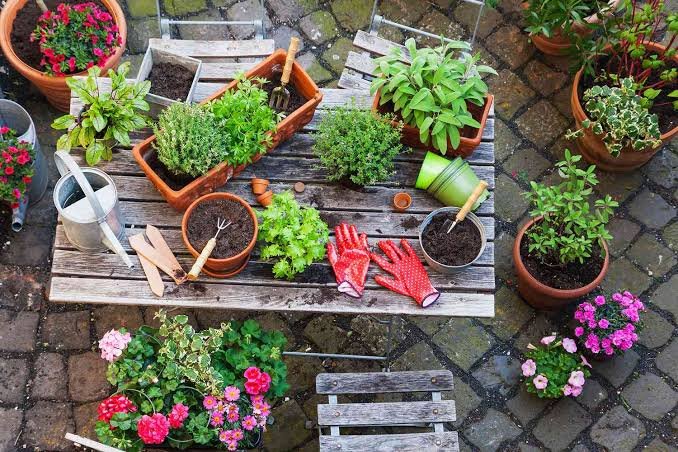Getting the right garden container is one of the most important things you’ll do when you’re planting. The plants’ health and growth are directly affected by the size of the pot. Too small, and your plant may become root-bound or stunted in growth; too large, and it might struggle to thrive in overly moist soil or fail to develop a strong root system. Here’s a guide on how to select the perfect garden container size for your plants.
Understand Your Plant’s Needs
The first step in choosing the right garden container is understanding the needs of your plant. Different plants have varying root systems, growth habits, and water requirements. For instance, small herbs like basil or parsley can thrive in relatively small containers, while larger plants such as tomatoes or dwarf trees require more space to grow roots and absorb nutrients effectively.
Root Depth: Many plants, especially vegetables, need deeper containers to accommodate their root systems. A shallow container may not provide enough room for plants like carrots, tomatoes, or lettuces, which need space for their roots to stretch out. For these kinds of plants, the best pot size is one that is at least 12 to 18 inches deep.
Root Spread: Other plants, such as shrubs, may have roots that spread outwards. These plants will require a wider container rather than a deep one. It’s essential to choose a garden container that allows ample room for both the spread and depth of the roots to ensure proper growth.
General Guidelines for Container Sizes
While understanding your plant’s specific requirements is crucial, there are some general rules of thumb that can help you decide on the size of the garden container:
1. Small Plants (Herbs, Annual Flowers, Succulents): For smaller plants, choose a garden container that is 6 to 12 inches in diameter. These plants generally don’t need deep containers, but they do require enough room for their roots to spread comfortably. To keep the plant from getting too wet, which can hurt it, the pot needs to have good ventilation.
2. Medium Plants (Perennials, Small Vegetables, Dwarf Trees): For medium-sized plants, like perennials or small fruit trees, choose a garden pot that is 12 to 16 inches across and 12 to 18 inches deep. This size gives roots enough room to grow while still letting water drain away. When it comes to plants that need to be watered often, bigger pots can help keep water in for longer.
3. Large Plants (Shrubs, Large Vegetables, Trees): Large plants require a garden container that is 18 inches or larger in diameter and at least 24 inches deep. Trees and shrubs typically have extensive root systems that need ample space to develop. A container of this size will allow for proper root growth, which is vital for the plant’s overall health.
Consider the Material of the Container
The material of your garden container plays a significant role in its size and weight. Materials like clay or ceramic are heavier and more restrictive, while plastic or fabric pots are often lighter and easier to move. If you choose a heavy material, you may need to scale down on the size of the container to avoid straining your back when moving it. Additionally, some materials, like terracotta, are porous and allow for better airflow but may dry out faster, requiring more frequent watering.
Container Shape Matters
While size is important, the shape of your garden container also impacts plant growth. A deep, narrow container may not provide enough space for plants with large root systems, while a shallow, wide container might make it difficult for certain plants to secure enough nutrients. When selecting a container, look for those that are deep enough for the plant’s roots but not excessively wide unless necessary for root spread.
Avoid Overcrowding Plants
It’s tempting to fill large garden containers with multiple plants, but overcrowding can be detrimental to your plants’ growth. Even if your container is large enough, remember that plants need space to grow. Avoid cramming too many plants into one container to ensure each one has room to develop and absorb the nutrients and water it needs.
Drainage is Crucial
No matter the size of your garden container, drainage is essential. For water not to pool at the bottom, make sure the container has holes in the bottom that let water drain out. Without proper drainage, roots can become waterlogged and may eventually rot. If your container doesn’t have drainage holes, consider drilling some yourself or choosing a different container.
Conclusion
Choosing the right garden container size is vital to your plants’ health and growth. By understanding the needs of your plants, selecting an appropriately sized container, and ensuring proper drainage, you’ll set your plants up for success. Remember that a well-chosen garden container not only provides your plants with the space they need but also adds aesthetic value to your home or garden space. Happy gardening!
